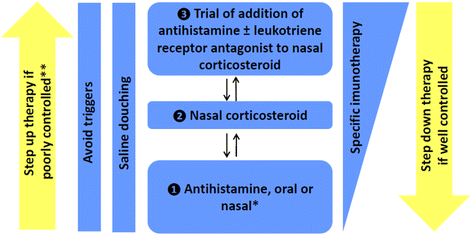The need for patient-focused therapy for children and teenagers with allergic rhinitis: a case-based review of current European practice
- PMID: 25657844
- PMCID: PMC4318152
- DOI: 10.1186/s13601-014-0044-5
The need for patient-focused therapy for children and teenagers with allergic rhinitis: a case-based review of current European practice
Abstract
Allergic rhinitis is a common problem in childhood and adolescence, with a negative impact on the quality of life of patients and their families. The treatment modalities for allergic rhinitis include allergen avoidance, anti-inflammatory symptomatic treatment and allergen specific immunotherapy. In this review, four cases of children with allergic rhinitis are presented to illustrate how the recently published EAACI Guidelines on Pediatric Allergic Rhinitis can be implemented in clinical practice.
Keywords: Allergy; Guidelines; Immunotherapy; Pediatric rhinitis; Rhinitis.
Figures


References
-
- Asher MI, Montefort S, Bjorksten B, Lai CK, Strachan DP, Weiland SK, et al. Worldwide time trends in the prevalence of symptoms of asthma, allergic rhinoconjunctivitis, and eczema in childhood: ISAAC Phases one and three repeat multicountry cross-sectional surveys. Lancet. 2006;368(9537):733–43. doi: 10.1016/S0140-6736(06)69283-0. - DOI - PubMed
-
- Walker S, Khan-Wasti S, Fletcher M, Cullinan P, Harris J, Sheikh A. Seasonal allergic rhinitis is associated with a detrimental effect on examination performance in United Kingdom teenagers: case-control study. J Allergy Clin Immunol. 2007;120(2):381–7. doi: 10.1016/j.jaci.2007.03.034. - DOI - PubMed
Grants and funding
LinkOut - more resources
Full Text Sources
Other Literature Sources

